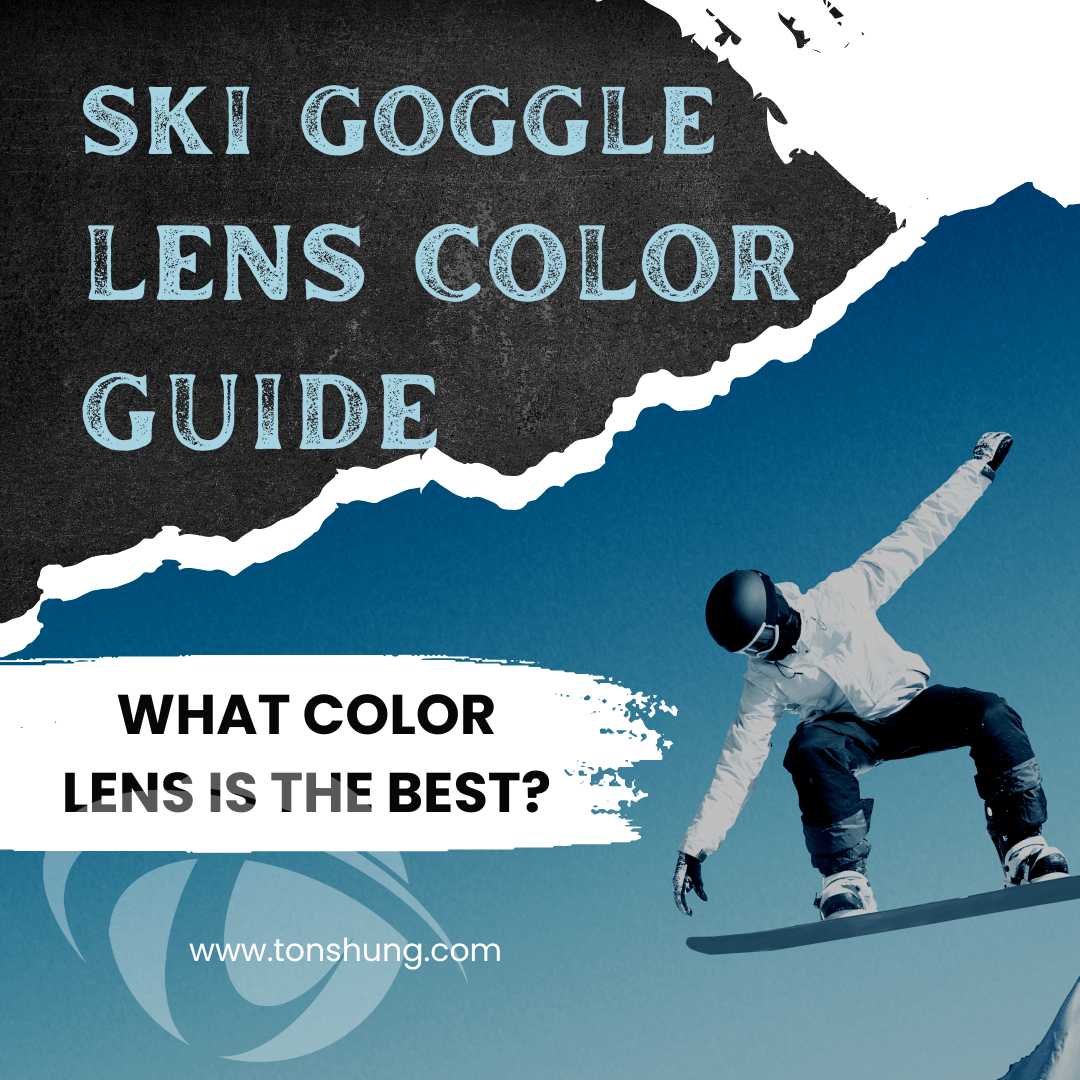Ski goggle lens color guide. Why do we need it?
The right ski goggles, except for the frame and features are important, choosing the right lens can also help a lot once out on the slopes or the backcountry.
So here is a list of the kind of lenses and their attributes. You may choose according to your use/needs.
Ski goggle lens color guide tells differences by two parameters
A lens has two parameters: the tint and the Visible Light Transmission (VLT). They work hand in hand, as some lens tints also reduce VLT, but sometimes for the same VLT, you may choose different tints to adjust to the terrain.
Note: VLT = Visible Light Transmission. It is an indicator of how much light is passing through the lens to your eye. The hight the number (up to 100%) the lighter passes, the clearer the lens. The lower the number (under 3% you can’t see through), the darker the tint.
Ski goggle lens color guide-by VLT
We can divide lens opacity into 5 categories:
| Category | VLT | Most suitable for |
| S0 | 80% – 100% | Night-time ride |
| S1 | 43% – 80% | Flat “white” days, foggy conditions, or bad weather |
| S2 | 18%- 43% | Bright overcast days or sunny conditions |
| S3 | 8% – 18% | Bright light and very sunny days |
| S4 | 3% – 8% | Extreme light reverberation: glacier |
Choosing the right VLT is important because a clearer lens will leave you blinded by the sunlight, but too dark a lens will prevent you from reading the terrain properly.
Ski goggle lens color guide-by tints
After adjusting the right VLT, the lens tint comes into play, as some tints are more suited to certain situations. Just to note, lens tint is not as important as the lens category.
In bright light conditions, dark tints are preferred and VTL around 5%~18%, like copper, dark brown, dark grey, and dark green. The darker lens filters out more light and is more comfortable under the strong sunlight.
The “mirror” finish helps with filtering out the light by reflecting the sunlight. The effect is lowering the VLT of the lens and makes it an ideal choice for bright, sunny days.
Fit for most light conditions, yellow, golden, and amber lenses filter out blue light, accentuate shadows and the holes in the snow so you can see moguls better. They perform better in low light and foggy conditions but still deliver a nice view in variable light conditions.
Another tint is light rose and rose copper lenses, these also work superbly on low-light days.
In the low light condition, clear lenses without any tint and finish are prime for sunset and night-time. Their very high VLT allows for the most amount of light to come in, helping you see in a darker environment.
Photochromic lenses are also a good choice if you are in long-term exposure to light-changing conditions. This technology allows the lens to adapt to the light, becoming darker or lighter based on the luminosity.
Another technology offered is Polarized lenses. These lenses cut glare and improve clarity and definition by fileting the light waves.
Glare is a combination created from the vertical rays of the sun and the horizontal rays of a surface reflection. To have a clear view in bright light and a safer ride, it is recommended to the polarized lens is lower than a 70% polarizing filter rate. However, please consider during the low light condition, the polarized lens may make the view even darker.
Except for using ski goggle lens color guide, how to choose an appropriate ski goggle?
Choose the appropriate size for your ski goggle
Everyone has a different face size and personal preference for comfort fit.
- Extra small: Best suited to small kids
- Small: Smaller face than the average face size in general.
- Medium: For most adults face size
- Large: For the larger adult face, or looking for wider view goggles
There are two sizes on our face for reference when we are choosing a goggle.
- The comfort of the head: The width between your temples.
- The range of the view: The height between your upper eyebrow to the cheekbone.
When you feel the goggle frame is adding uncomfortable pressure on your temples or the nose bridge, please adjust the headband and slightly move the goggle up and down into the appropriate position. Or you may consider looking for a larger size goggle.
At Tonshung technologies we offer a wide range of protective eyewear, from OEM to ODM that you can choose from. We propose multiple products which match all the standards for different markets, and we will produce the protective eyewear you need to match your requirements.
For any information, please contact us or use info@tonshung.com.
Learn More: How To Choose Ski Goggles & Snowboard Goggles In Beginning?

